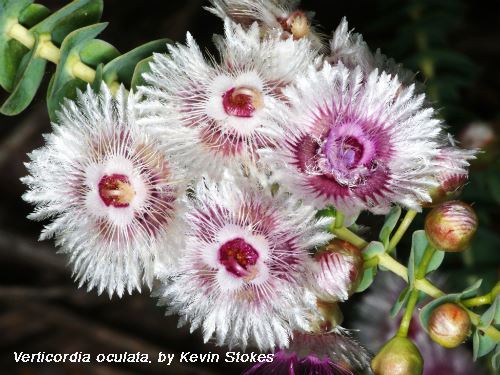
When it comes to thinking about a favourite plant, I think those interested in Australian plants are very spoiled for choice. Have you ever thought about a favourite? Where would you start? Banksias, grevilleas or a thousand others? There would be as many favourites as there are plants to choose from and it is of course a personal choice. What makes a favourite?…Is it colour?…form?…flowering?
I must confess to liking most Aussie plants but over the years, a few have popped up relentlessly in my garden, some even having the status of ‘annual’ even though they are not. I just keep getting sucked in by their…what?
I can’t answer that. For me it’s just a feeling. As an instance, I find it very hard not to buy a Hypocalymma robustum in flower even though I know it will become mulch before the end of summer. So in contemplating my favourites, I thought I would share my choice half a dozen or so plants that for me stand out. They are not always the brightest colours or the biggest flowers and I wondered if other people might like to share their favourites with other members.
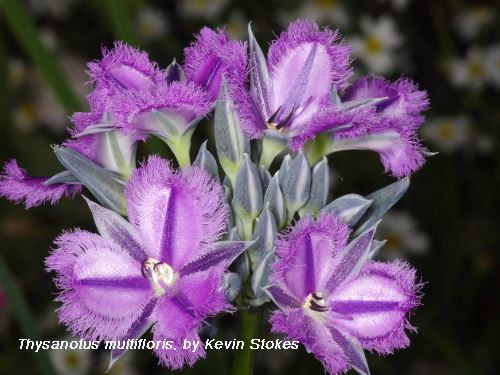
If I had to pick a No.1, it would probably be this one – Thysanotus multiflorus. I’m not sure how reliable this species is on the East Coast but I have one planted and in bud so here’s hoping. Local species of Thysanotis grow well in light soil in gardens but don’t have the floral display of this one. I find the contrast between the flowers and buds most attractive.
Hypocalymma sp ‘Cascade’ is a stunning low growing or prostrate plant that is listed as Rare and Endangered. This would make a wonderful rockery plant if it ever gets more into cultivation than it is now.
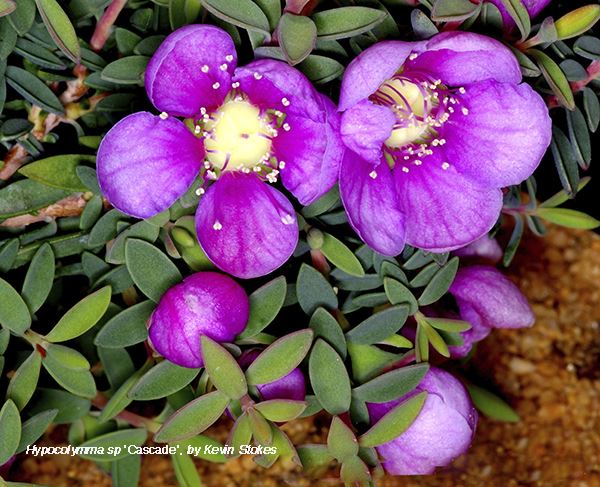
It grows in a restricted area in WA in the Esperance district and is probably named after the small village of Cascade. I saw this in a garden in WA doing very well in imported soil. I imagine this is a plant that will be very popular in time.

Now Viola hederacea – I never tire of seeing a bed of this delightful and easily grown ground cover. It prefers shady moist areas but will take some sun if there is assured moisture. Ivy Leaf Violet is native to many parts of eastern Australia and grows to about 10cm tall spreading readily by trailing stolons that take root at nodes along the stolon. It’s very easily propagated and is rarely without a flower. While very commonly grown and easily obtained, it never-the-less gets a place in my favourites list.
For some reason this particular Boronia hits the spot for me.
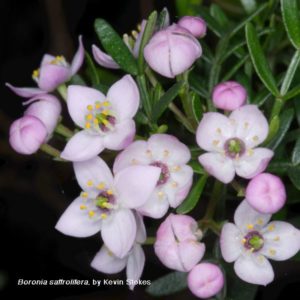
There are of course many lovely Boronia species and, of course, I adore them all including one called Boronia serrulata which I have renamed Boronia seeyalater. This is because of its habit, along with many other Boronias, of exiting this life with little or no hesitation or care nor consideration for devastated gardeners.
All this genus is worthy of trialling. I have had this species shown (Boronia saffrolifera) survive for some time in a pot with a potting mix of sand peat and a little compost. The mix had had other plants growing in it for some time before I used it for the Boronia, and perhaps this helped it survive. It was in a sunny position but with late afternoon shade. This Boronia can be seen around Port Stephens in sandy soil.
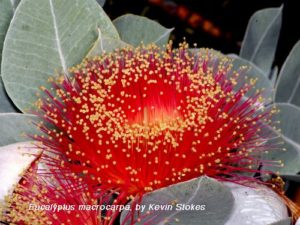
Eucalyptus macrocarpa and Eucalyptus youngiana must rank near the top of Australia’s most spectacular flora.
To see these plants growing wild is a privilege not easily forgotten. Not likely to be grown successfully on the east coast and won’t grow at my place…nuff said! Look ’em up on the web for more details, if you want to sacrifice your hard earned dough. E macrocarpa is grown successfully at Burrendong Botanic Garden and Arboretum.
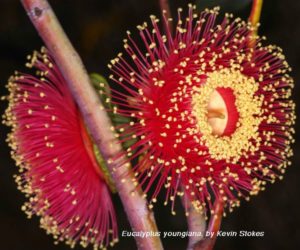
I may be criticised by some for including plants from other areas or that are difficult to grow but I didn’t set out to do a gardening advice article. I merely wanted to share what plants I have been impressed by over the years as I came across them in gardens or in the bush. I would dearly love to grow them but it isn’t likely to happen. But that doesn’t stop me from appreciating the incredible Australian flora. I hope others may share their favourites in this way – I’m sure there will be many surprises.
Oh yes, Verticordia oculata is a species of the sand plains of Kalbarri National Park and I’ve changed my mind…this is now my No. 1.
